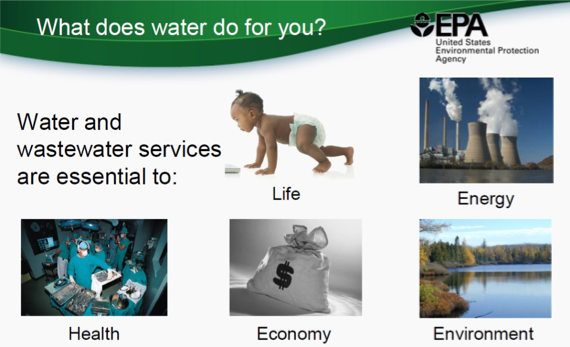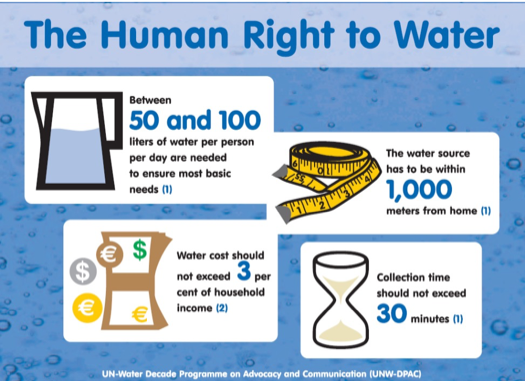Questions about this module? Get support from one of our experts:
9:00AM-4:00PM (AST) – LIVE virtual office hours for participants or by email at sopscaribbean@gmail.com
Module prepared by

Dr Paul Hinds has outstanding experience as a Regional Coordinator for the Global Water Partnership-Caribbean (GWP-C), and as a Director of Coastal Zone Management Unit for Jamaica’s Natural Resources Conservation Authority (now NEPA). He has experience in climate-resilience infrastructure management with in-depth institutional knowledge at the regional level, and engineering expertise.
Introduction
The provision of safe drinking water and sanitation for communities is a critical aspect in protecting public health. The responsibility for quality public water supplies and sanitation lies with scientists, design engineers, government regulators, government inspectors, public health authorities, water utilities and community-based organizations. Management of water supply and sanitation at the community level, therefore, requires institutional arrangements that promote and support community responsibility, and participation, to ensure ownership, and community capacity building.
Objectives
Upon completion of this module, you will be able to:
- Develop a set of procedures to assess the current status of water supply facilities.
- Strengthen participating communities’ capacity and capability to plan, implement, operate, and maintain improved water supply and sanitation facilities;
- Develop tools for assessing risk and vulnerabilities of water and sanitation infrastructure at the community level.
To know in this Module
- The human rights to water: a situation analysis of the current status of water supply and sanitation in the community and how this reflects United Nation declaration on the human rights to access to water and sanitation.
- Water and sanitation planning and implementation: enabling environment, diversification of water supply (e.g., rainwater harvesting), importance watershed protection, water resources planning by utility, CBOs, and NGOs involvement in community planning of water and sanitation.
- Identification of potential climate hazards and consequences to exposed infrastructure: assessing risk, hazards, and exposures.
- Tools to assess vulnerability: methodologies to assess vulnerabilities and risk in an effort to promote infrastructure resilience.
To-Do in this Module
| Topic | Duration |
|---|---|
| Assess community’s adherence to UN human rights to water declaration | 15 min |
| Water and sanitation planning and implementation | 20 min |
| Identification of potential climate hazards and consequences to exposed infrastructure | 40 min |
| Tools to assess Vulnerability | 45 min |
Key concepts: Water supply and wastewater infrastructure, rainwater harvesting, community, risk, vulnerability.
1. Human Rights to Water

1.1. Threat to water and wastewater infrastructure in the Caribbean:
- Hurricanes
- Droughts
- Flooding
- Sea level rise
- Aging infrastructure
- Man-made accidents and contamination
Exercise (Padlet)
Enter your response in the Padlet below. You can post your answers directly by clicking the + button. Indicate your name and institution in your response.
- Identify which of these is the greatest cause of water service interruption. Are there other potential source(s) of water service interruption?
- Discuss potential causes of a water service interruption and record examples. Share your own experiences, as well as reflect on significant examples (e.g. Saint Vincent volcano, etc.).
1.2. UN resolution on human rights to water and sanitation
On 28 July 2010, through Resolution 64/292, the United Nations General Assembly explicitly recognized the human right to water and sanitation and acknowledged that clean drinking water and sanitation are essential to the realization of all human rights. The Resolution calls upon States and international organizations to provide financial resources, help capacity-building and technology transfer to help countries, in particular developing countries, to provide sufficient, safe, clean, accessible, and affordable drinking water and sanitation for all.
- Sufficient. The water supply for each person must be sufficient and continuous for personal and domestic uses. These uses include drinking, personal sanitation, washing of clothes, food preparation, personal and household hygiene. According to the World Health Organization (WHO), between 50 and 100 litres of water per person per day are needed to ensure that most basic needs are met, and few health concerns arise.
- Safe. The water required for each personal or domestic use must be safe, therefore free from micro-organisms, chemical substances and radiological hazards that constitute a threat to a person’s health. Measures of drinking-water safety are usually defined by national and/or local standards for drinking-water quality. The World Health Organization (WHO) Guidelines for drinking-water quality provide a basis for the development of national standards that, if properly implemented, will ensure the safety of drinking-water.
- Acceptable. Water should be of an acceptable color, odor, and taste for each personal or domestic use. […] All water facilities and services must be culturally appropriate and sensitive to gender, lifecycle, and privacy requirements.
- Physically accessible. Everyone has the right to a water supply and sanitation service that is physically accessible within, or in the immediate vicinity of the household, educational institution, workplace, or health institution. According to WHO, the water source must be within 1,000 meters of the home and collection time should not exceed 30 minutes.
- Affordable. Water, and water facilities and services, must be affordable for all. The United Nations Development Programme (UNDP) suggests that drinking and wastewater costs should not exceed 3 per cent of household income.
The Committee on Economic, Social and Cultural Rights (CESCR), General Comment N. 16 – Article 3: the equal right of men and women to the enjoyment of all economic, social and cultural rights states that, men and women should have equal rights to:
“Adequate housing, the right to adequate food, the right to education, the right to the highest attainable standard of health, and the right to water”.
https://www.escr-net.org/resources/general-comment-n-16-article-3-equal-right-men-and-women-enjoyment-all-economic-social-and
Many critical community services and all critical infrastructures rely on water to function. Drinking water and wastewater services rely on other services to ensure consistent delivery of safe water, such as transportation for the delivery of treatment chemicals.
Question and Discussion
Is any of the above being applied in countries represented? If so, give examples. If not, why not?
- Based on the definitions above, develop an assessment tool to measure sufficiency, safety, acceptability, accessibility, and affordability at the community level.
- Should this CBO and NGO be trained in similar assessment tools?
- How can the community meet its needs for delivery of healthcare in a major disaster when drinking water and wastewater services have been interrupted?
- Identify actual emergency water needs to make planning more effective.

